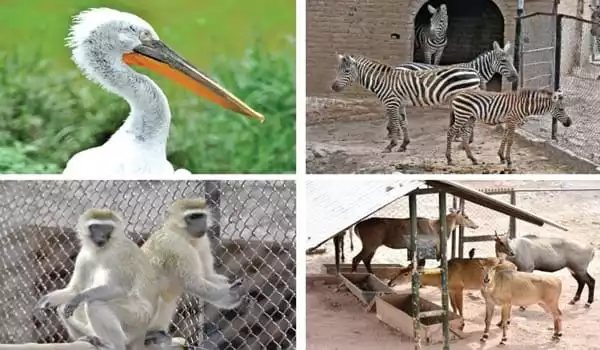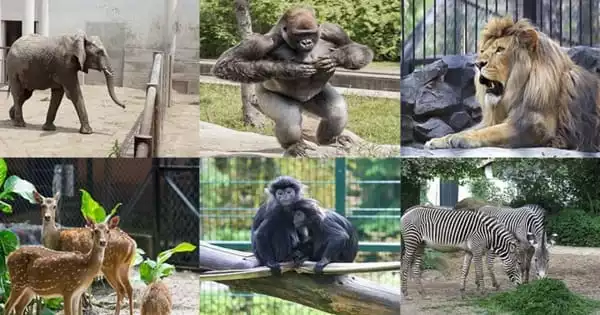Animal keepers use the term enrichment to describe the introduction of environmental stimuli into the surroundings of caged animals. Because there are so many different types of enrichment available to animal keepers, the benefits and cons of enrichment vary greatly. Concerns in enriching animal environments include the spread of disease in social housing, the threat to human safety posed by loose animals, and the ethical quandary of feeding imprisoned predators live prey.
According to recent research, zoos and aquariums may be able to improve the lives of a broader spectrum of their creatures. In recent years, “environmental enrichment” (providing animals with stimulating habitats) has grown more prevalent in zoos and aquariums.
The latest study, conducted by the University of Exeter and Sparsholt College, Hampshire, looked into whether zoo enrichment is based on evidence of what each species requires. It was discovered that this was true for specific animals, including carnivores and parrots, as well as certain forms of enrichment.
Environmental enrichment, also known as behavioral enrichment, provides challenges, opportunities, and stimulation that are species-appropriate. Environmental enrichment entails providing dynamic environments, cognitive challenges, and social changes on a regular basis.
Our study indicates that habitat enrichment is crucial, and zoos and aquariums are taking it seriously. As it was 15 or 20 years ago, enrichment is no longer an afterthought. Based on our findings, we would encourage zoos to continue enrichment, but with a stronger emphasis on using available knowledge on what works for each species.
Dr. Paul Rose
An enriched environment should encourage a variety of natural behaviors that animals find rewarding while also allowing animals to respond positively to potential stressors. Opportunities to conceal or climb away from visitors or more dominant co-species, for example.
Along with the animal’s health and diet, environmental enrichment is an important aspect of each animal’s quality of life and wellbeing at the Zoo. The keepers are extremely informed about the natural behaviors and physiology of the species, allowing them to create the most appropriate and effective enrichment programs. The ultimate purpose of enrichment programs is to improve the well-being of the animals in our care. We believe that by experiencing this, our guests will be able to connect more profoundly with these animals and get more involved in their protection around the world.
The study does, however, identify potential to “diversify the enrichment types being supplied and the species being examined.”

“Our study indicates that habitat enrichment is crucial, and zoos and aquariums are taking it seriously,” stated University of Exeter’s Dr. Paul Rose. “As it was 15 or 20 years ago, enrichment is no longer an afterthought.” Based on our findings, we would encourage zoos to continue enrichment, but with a stronger emphasis on using available knowledge on what works for each species. Keepers should consider what behaviors are being taught and whether there is evidence that this behavior is normal and good in the long run.”
The research looked at a database of peer-reviewed works as well as two periodicals for zoo workers. Almost 77 percent of the enrichment articles identified focused on mammals, with 11 percent on birds, 6 percent on numerous species, 4 percent on reptiles, and only a few on amphibians, fish, and invertebrates. This emphasis on “high-profile” species may result in greater and higher-quality enrichment for some species than others. However, in the case of mammals, the application of biological evidence to inform this enrichment was inconsistent.
Changing the physical habitat, adjusting animal care, forming social groups, and enhancing sensory stimulation are all ways to enrich an animal’s surroundings. You may have seen our bears and apes playing with boomer balls and plastic crates. These are some examples of “furniture” that can be added for an animal to play with.
Other differences were also found by the researchers. Enrichment for parrots, for example, was more commonly evidence-based than enrichment for penguins. The study discovered a preference for specific types of enrichment, particularly nutritional enrichment (the provision of food in a manner that resembles the animal’s native habitat). Meanwhile, there were significantly fewer articles on social enrichment, which focuses on the composition of a group, different mating opportunities, and so on.
The purpose of any enrichment program should be to generate ideas for providing a species-appropriate stimulating environment that encourages positive behaviors while keeping in mind that both species and individuals will have varied demands. “We encourage any zoos who use enrichment to publish their findings,” said James Brereton of Sparsholt College Hampshire, “since it may be that the breadth of enrichment being employed isn’t necessarily in the literature.”
















